Is your wooden masterpiece at risk of splitting? Learn how epoxy might be your unexpected hero in preserving wood’s integrity and beauty. Ready to dive into the world of smart woodworking solutions?
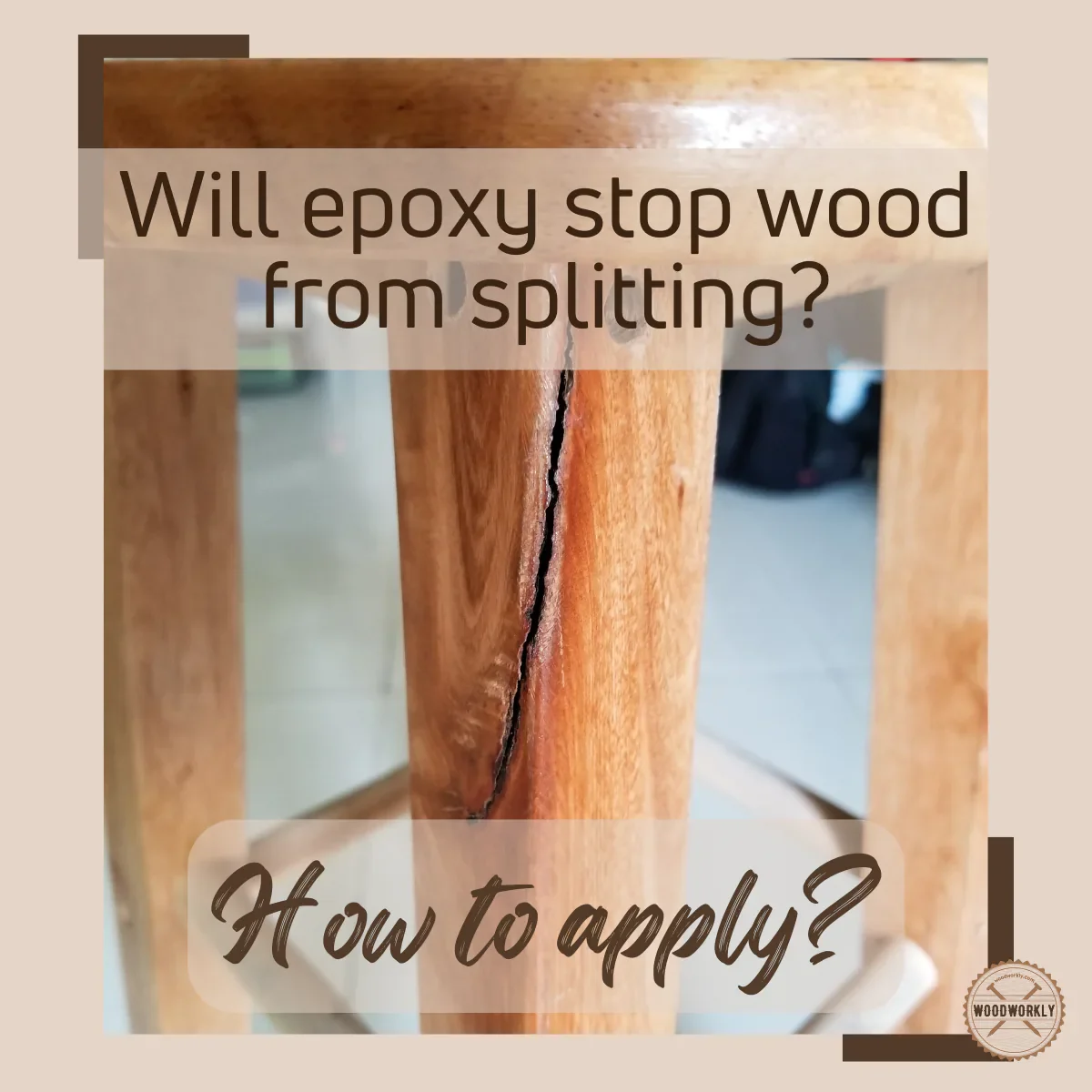
In woodworking, epoxy is used as a sealer or filler to make a strong and durable bond with the wood. It makes a waterproofing sealer over the wood that helps outdoor furniture to get protected from rotting and weather elements.
When I was working on making a bed frame, it got some splits due to my nailing mistakes. I was so worried and seek for a solution.
I already got new epoxy in my working area and used it to fix those splits and it went out perfectly. Here’s how I did that, and this same method can use to fix splits in greenwoods as well.
So, let’s discuss, will epoxy stop wood from splitting?
Yes, Epoxy will stop wood from splitting since it is a filler and works as an adhesive. Epoxy fills wood splits and stops them from spreading further. It makes a durable, strong bond with wood and holds wood split sides together. Fix splits with epoxy in matching color and sand the remaining.
But that’s a quick snapshot and there’s a lot more to know about using epoxy to stop wood from splitting.

In this article, we’ll explore will epoxy stops wood from splitting and how to do that properly without making any mistakes with all the tips and techniques.
Furthermore, I’ll answer some frequently asked questions.
Let’s jump in!
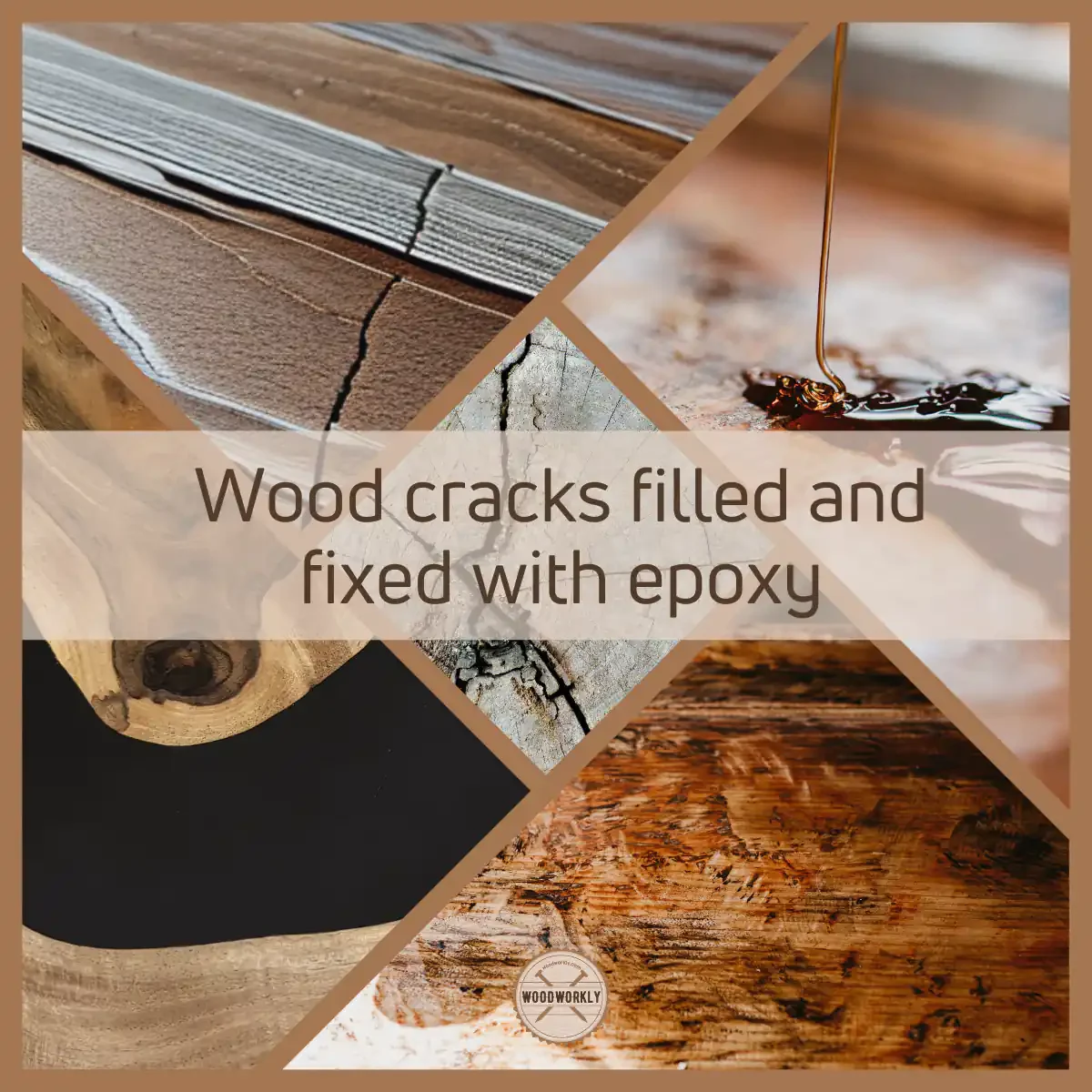
Does Epoxy Stop Cracks In Wood?
Yes, epoxy stops cracks in the wood. It fills cracks and splits in the wood and stops them from spreading further.
But please note that not all epoxies are good to stop cracks in the wood.
Use low-viscosity epoxy to seal wood cracks and splits.
Epoxy makes a durable, strong bond with wood fibers and works as an adhesive and as a filler.
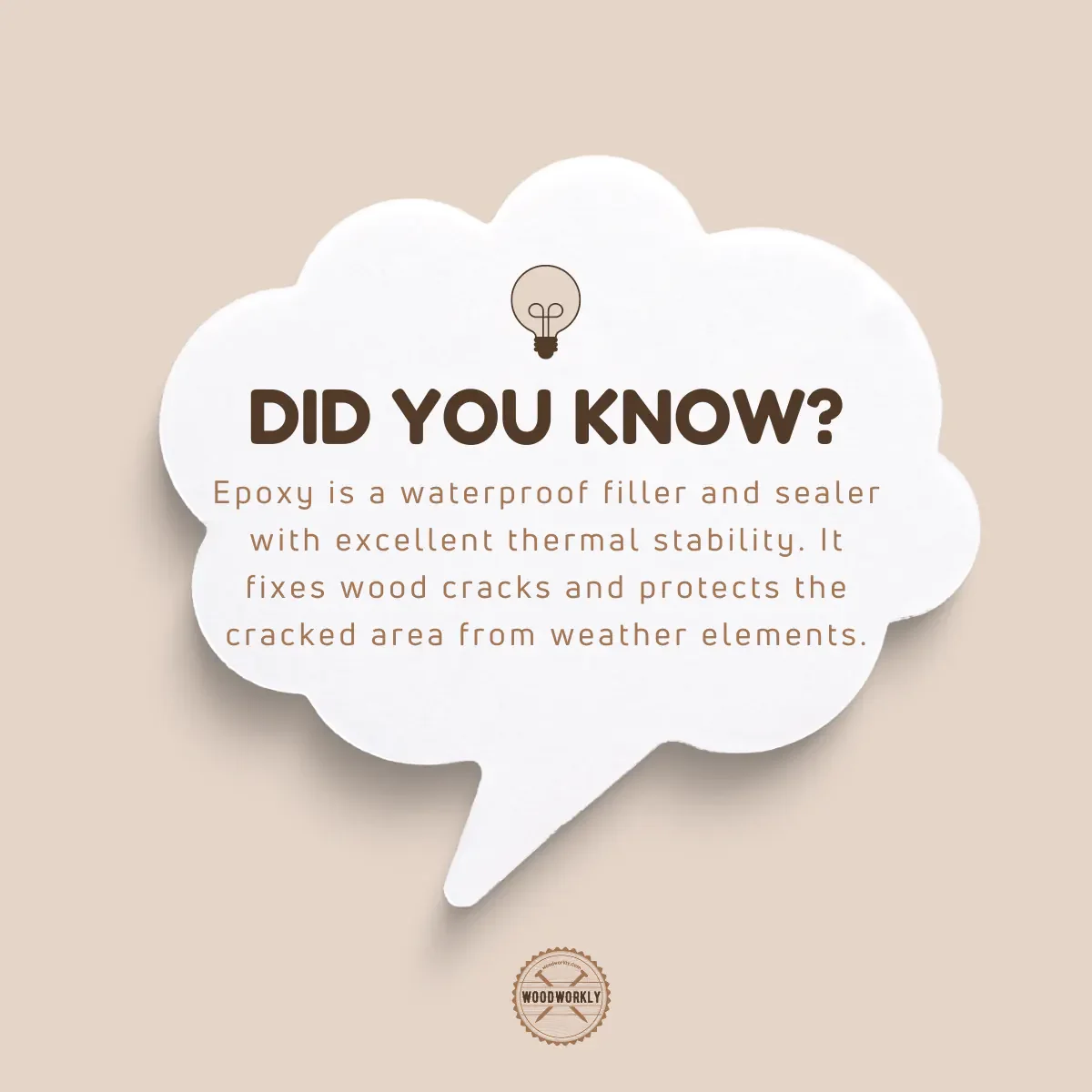
Most important, you can buy epoxy in matching color as your furniture which is great for hiding cracks and gaps in the wood.
Epoxy is a waterproofing sealer or filler. It has an excellent thermal resistance and mechanical strength.
The water evaporation rate of the wood fibers in that cracked area will reduce significantly by applying a waterproofing sealer over the wood.
This avoids wood shrinkage upon humidity changes in the outside air which can lead wood to crack further around the area epoxy is applied.
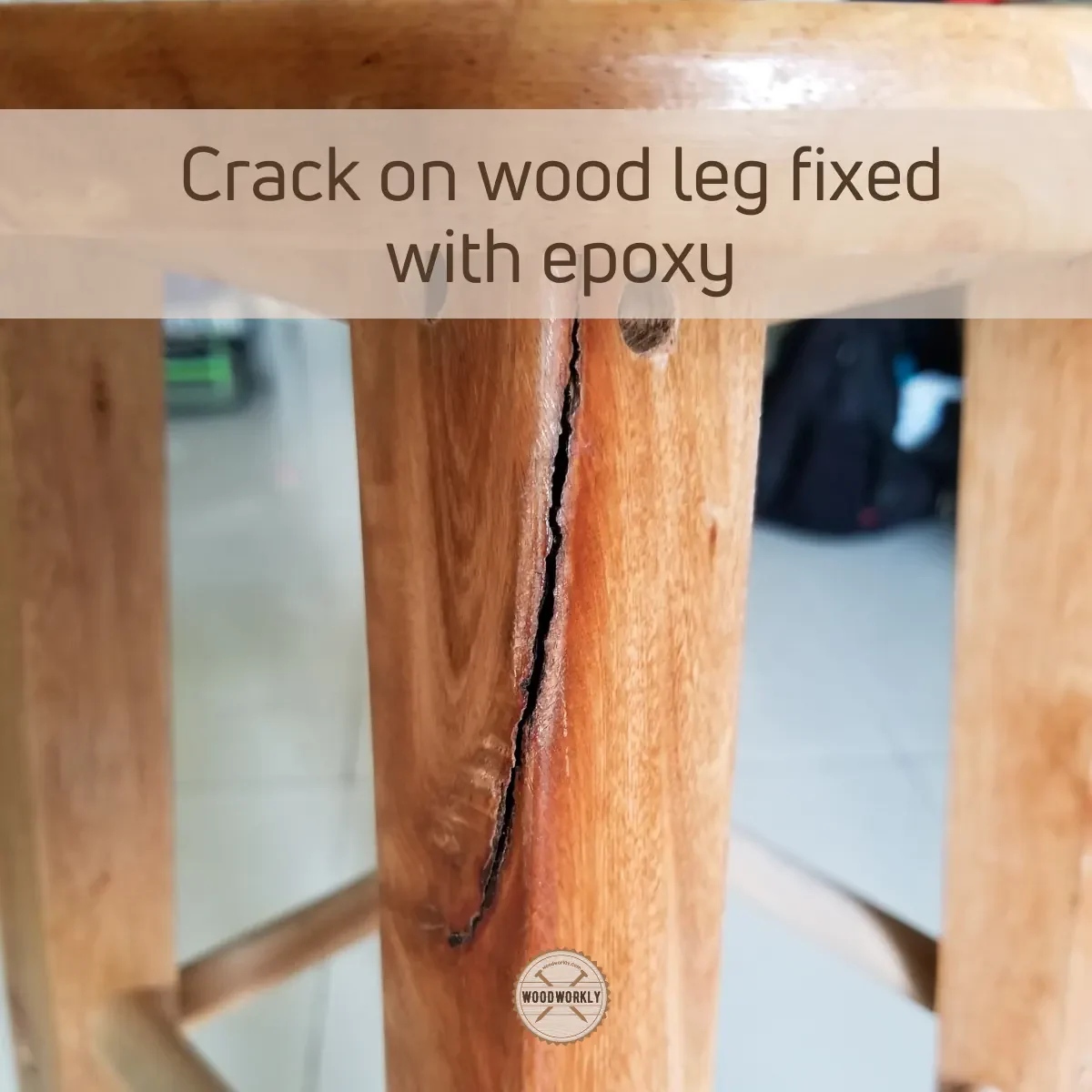
Therefore, better not to use epoxy to stop cracks in fast-drying woods since it will continue to crack further because of epoxy.
Better to apply epoxy on slow-drying wood and woods that are already treated with stain, sealer, or paint since they already have a slow moisture evaporation rate all over the wood.
In order to get a clear idea, I have separated the advantages and disadvantages you’ll probably get by using epoxy to stop wood splits.
Pros And Cons OF Using Epoxy To Stop Wood Splits
| Pros | Cons |
| Seals and fills wood cracks and splits easily | Unable to use for fast drying woods due to their high contraction rate |
| Waterproofing sealer | Slow down the moisture evaporation rate which can lead bare wood to crack further |
| Easy to match the color | Expensive |
| Adhere well with wood fibers | Time-consuming |
| Able to apply with a single application | No UV resistance |
| Low shrinkage | Unable to fill large cracks |
| Work excellently on woods that are already treated | |
| Able to fill all the small cracks |
As you can see epoxy is great for stopping wood from splitting with ease.
But be careful and take advice from professionals when using it to fill cracks in fast-drying woods due to their high evaporation rate.
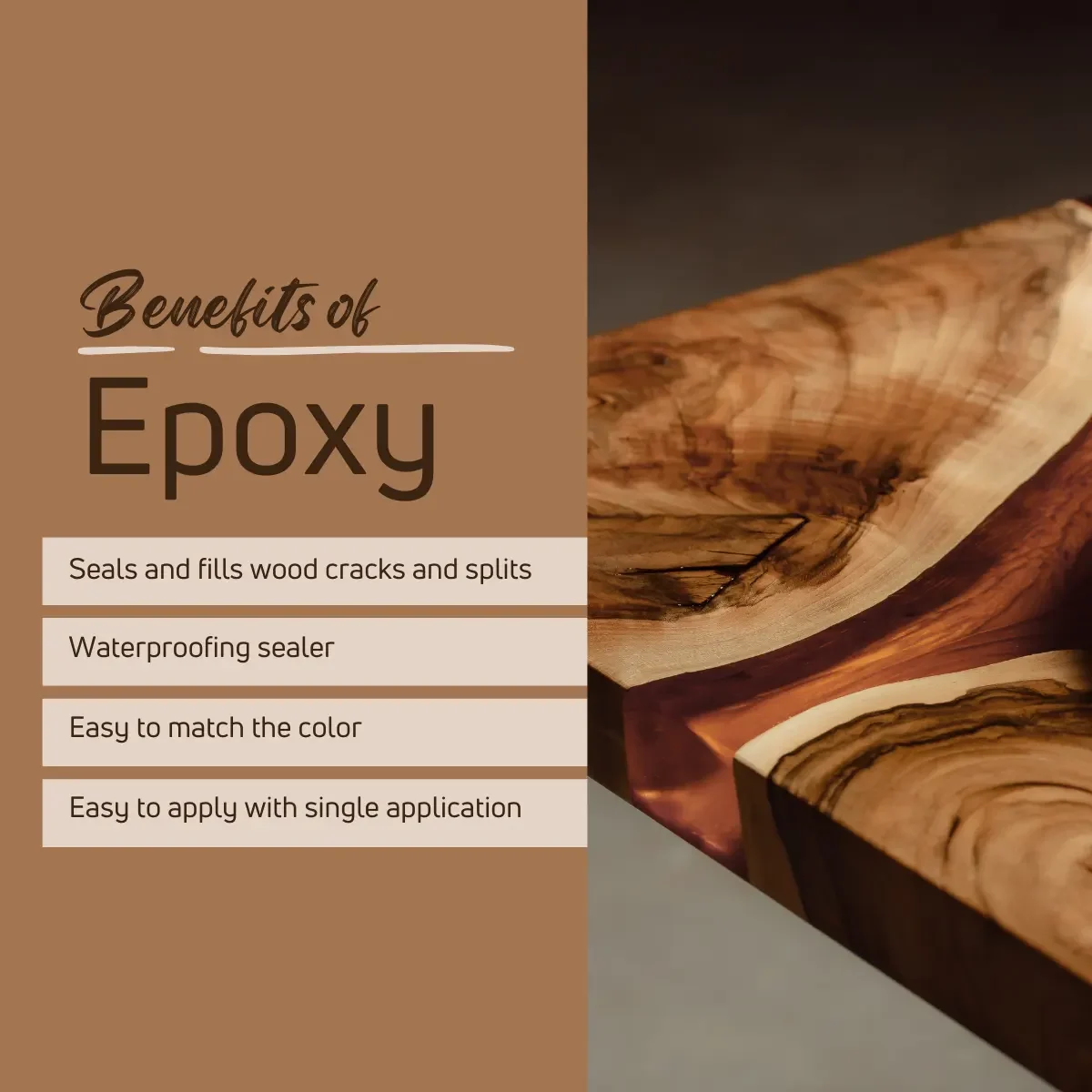
Let’s discuss what does epoxy to wood.
What Does Epoxy Do To Wood?
Epoxy makes a good adhesion between the wood split sides and fill the small gaps and splits and make them waterproof.
It prevents splits and cracks from continuing further. Plus, epoxy has an excellent thermal resistance.
Therefore, it won’t break due to temperature fluctuations and is able used for outdoor furniture since it can tolerate weather elements.
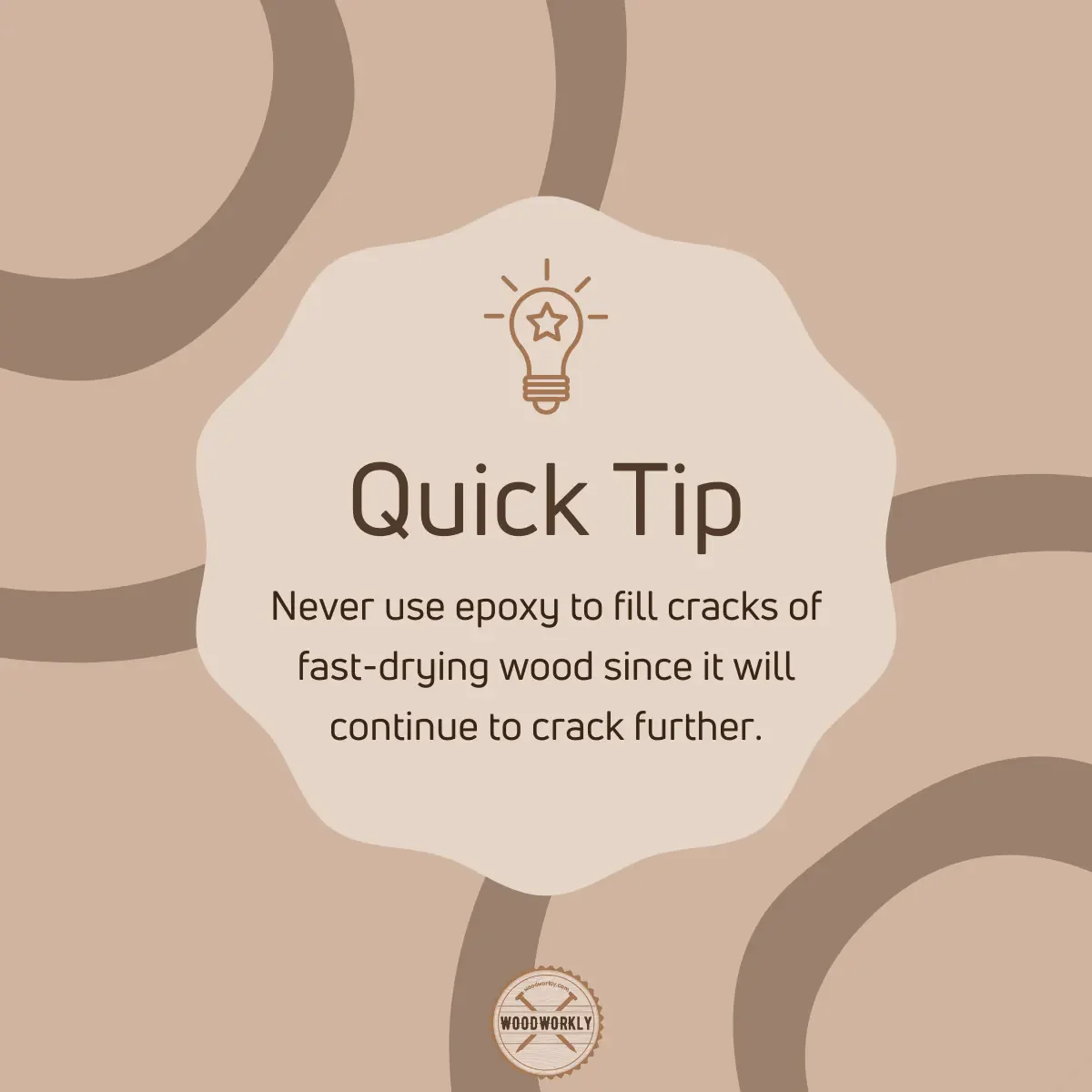
Because of being a waterproofing sealer, water will prevent it from entering the wood inside through the cracks and splits.
This is so useful since most furniture, woodwork, and greenwoods start to rot when the water enters the wood through those gaps, cracks, and holes.
Thankfully, the epoxy coat repels water and stops them from getting inside, and keeps wood from rotting and decaying.
Epoxy is self-leveling and quickly fixes small wood splits and cracks and stops them from continuing.
It is strong, and durable and adds a new touch to the wood by filling voids and making it smooth.

By filling wood splits with epoxy, in the future, food particles, dust, and dirt won’t stay on your tabletops.
Let’s head into the most interesting part of using epoxy to stop wood splits.
Tools And Materials To Strop Wood From Splitting Using Epoxy
- Metallic tape
- Epoxy resin
- Hardener
- Artist charcoal or wood-colored dye (optional)
- Measuring cups
- Mixing container
- Paintbrush
- Sandpaper
- Latex gloves and facemask
- Clean rags
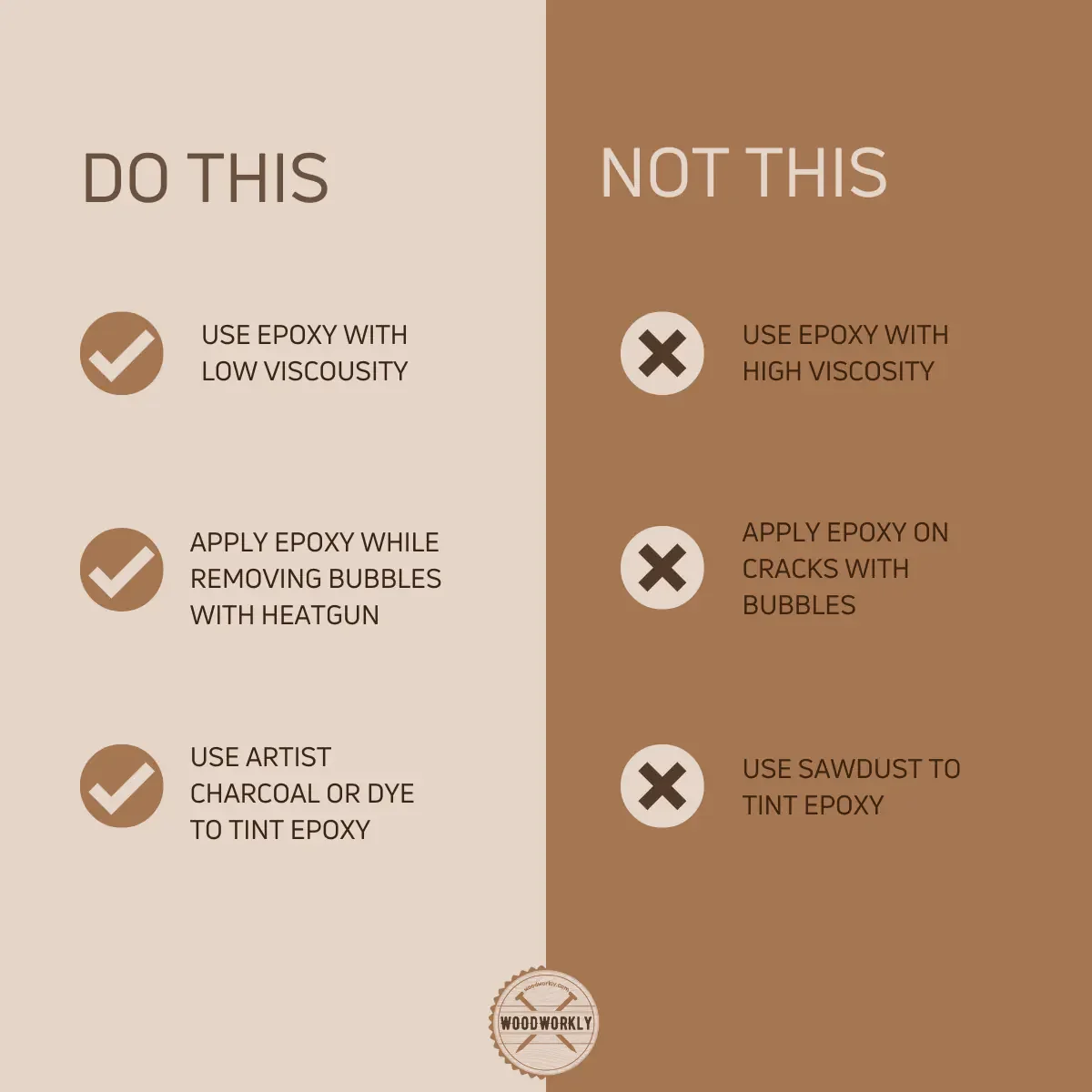
Procedure To Stop Wood From Splitting Using Epoxy
- Surface preparation and cleaning
- Cover the bottom side of the cracks with tape
- Mix epoxy resin and hardener
- Tint the epoxy mixture
- Pour epoxy into wood splits
- Let it dry and cure
- Level the surface
So, let’s discuss each of the above steps in detail to get a crystal clear idea of using epoxy to stop wood splitting.
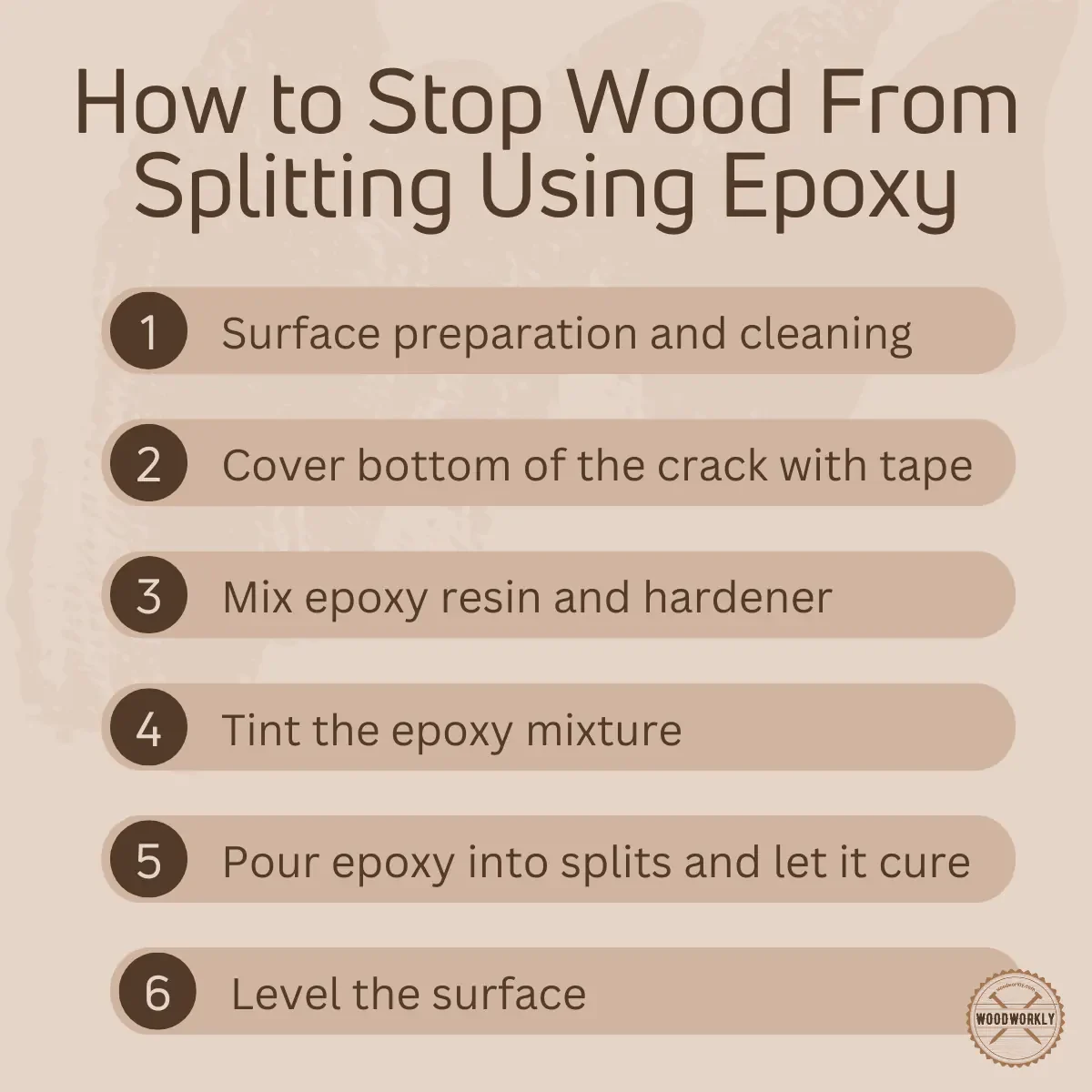
1. Surface Preparation And Cleaning
First, you should take your woodwork or furniture which has splits to take to a well-ventilated space because having good air circulation helps epoxy to dry and cure faster.
Plus, epoxy resin and hardeners contain chemical fumes that release upon application. those chemical fumes can cause breathing issues upon inhalation.
Working in a well-ventilated area helps to remove those chemicals directly from the working space which is good for our health.
After bringing the wood to a ventilated area clean the wood splits and cracks well with clean rags.
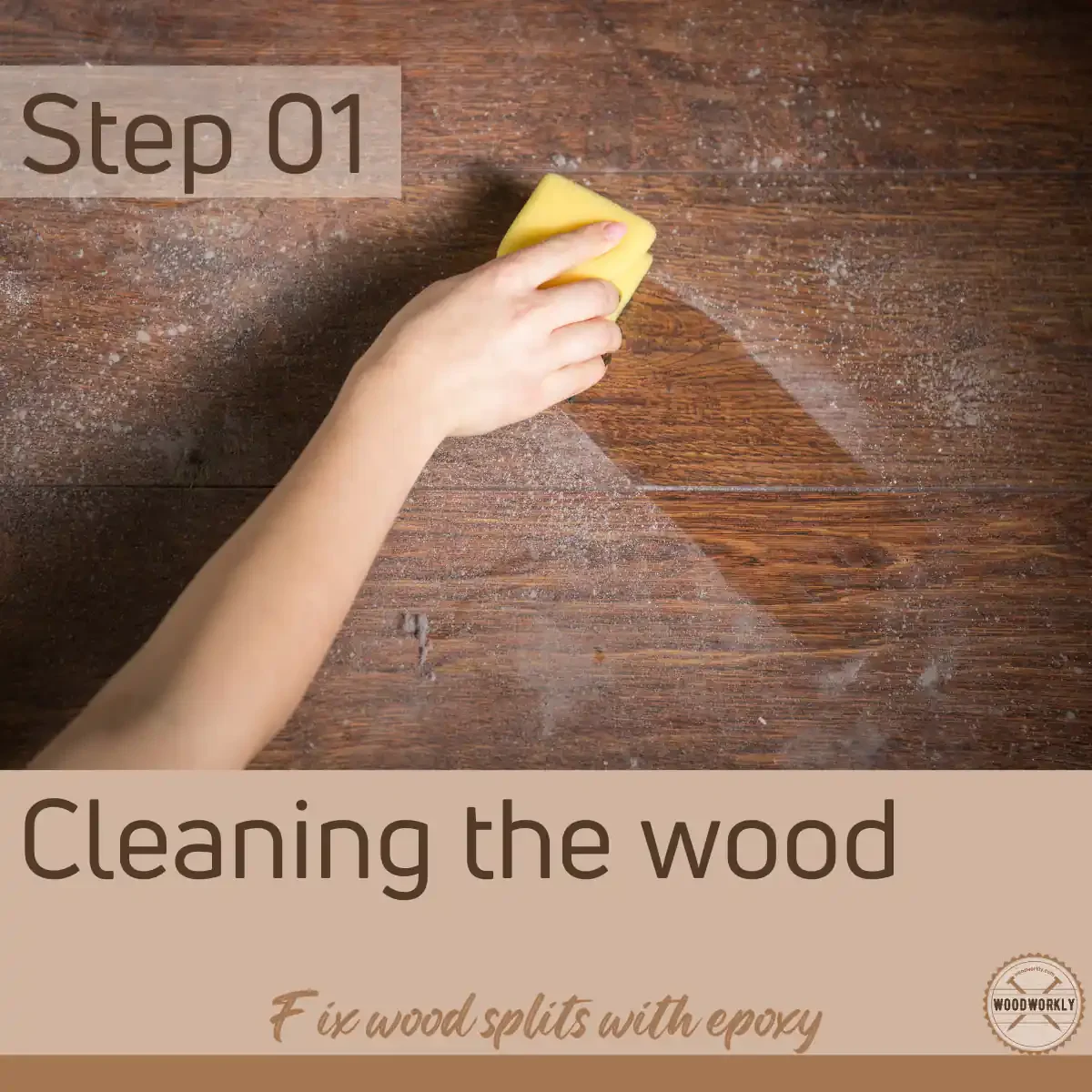
Or you can use an air blower to remove dust and make the surface super clean. Having dust reduces the performance of epoxy and destroys its adhesive properties.
When the splits and cracked areas are clean and nice, you can move on to the next step.
2. Cover the Bottom Side Of the Cracks With Tape
Now take the metallic tape and tape off the bottom side of the cracks. Taping is necessary only when the cracks spread from top to bottom of the surface.
Use a chisel or any other hard surface to get good adhesion between the wood and the tape.
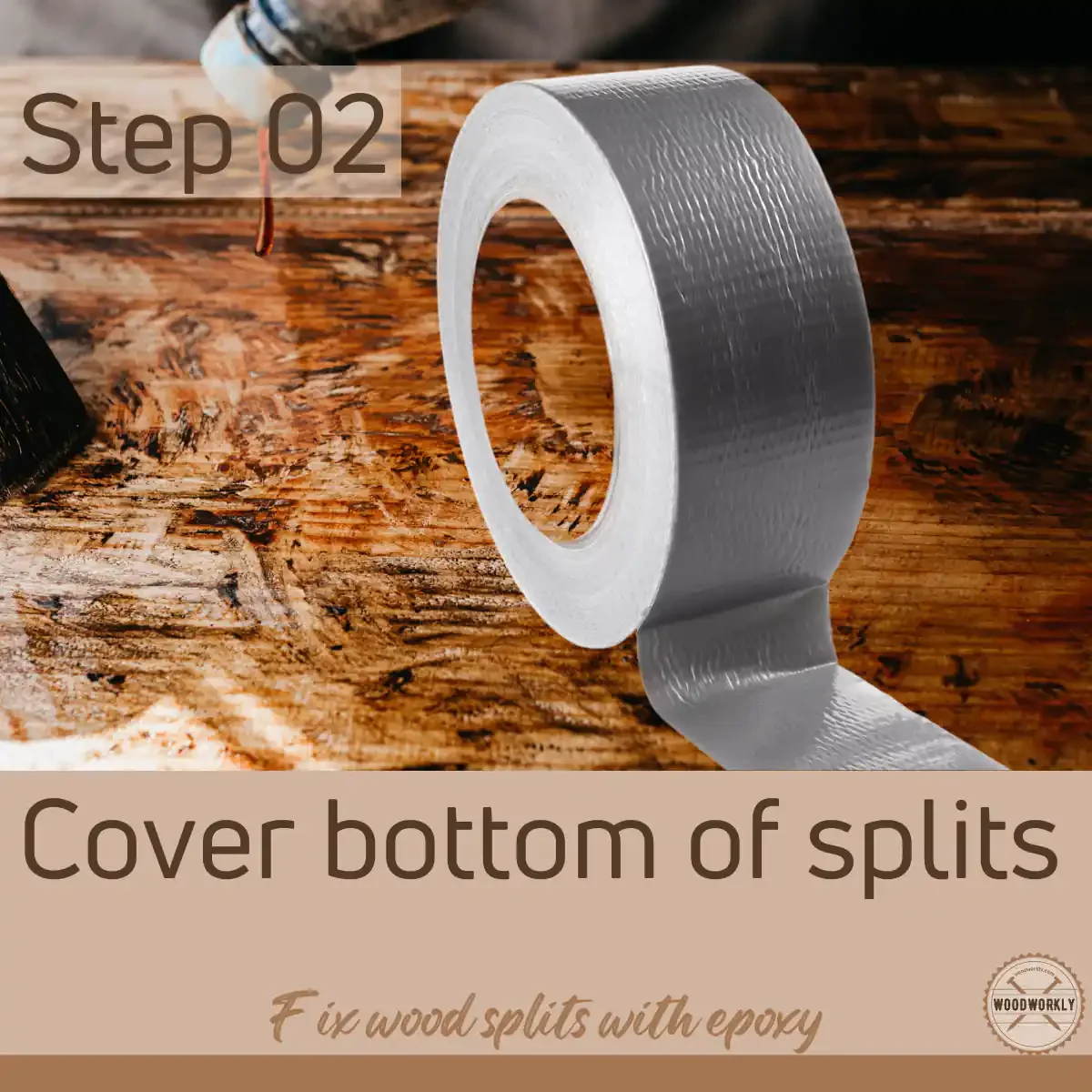
After taping the bottom surface of the cracks and the end, leave a little proud of the tape on the top surface.
Among them, the metallic tape is perfect to fill cracks with epoxy since it is extremely sticky, very low profile and spans gaps pretty well.
3. Mix Epoxy Resin And Hardener
Now pour one part of epoxy into the mixing plastic container and pour one part of hardener and mix them well without forming bubbles.
The epoxy resin and hardener mixing ratio should be 1:1.
You need to mix quickly since epoxy dries quickly when it is outside of the container.
Better if you can mix epoxy in small batches since you cannot keep them outside for so long without getting hard.
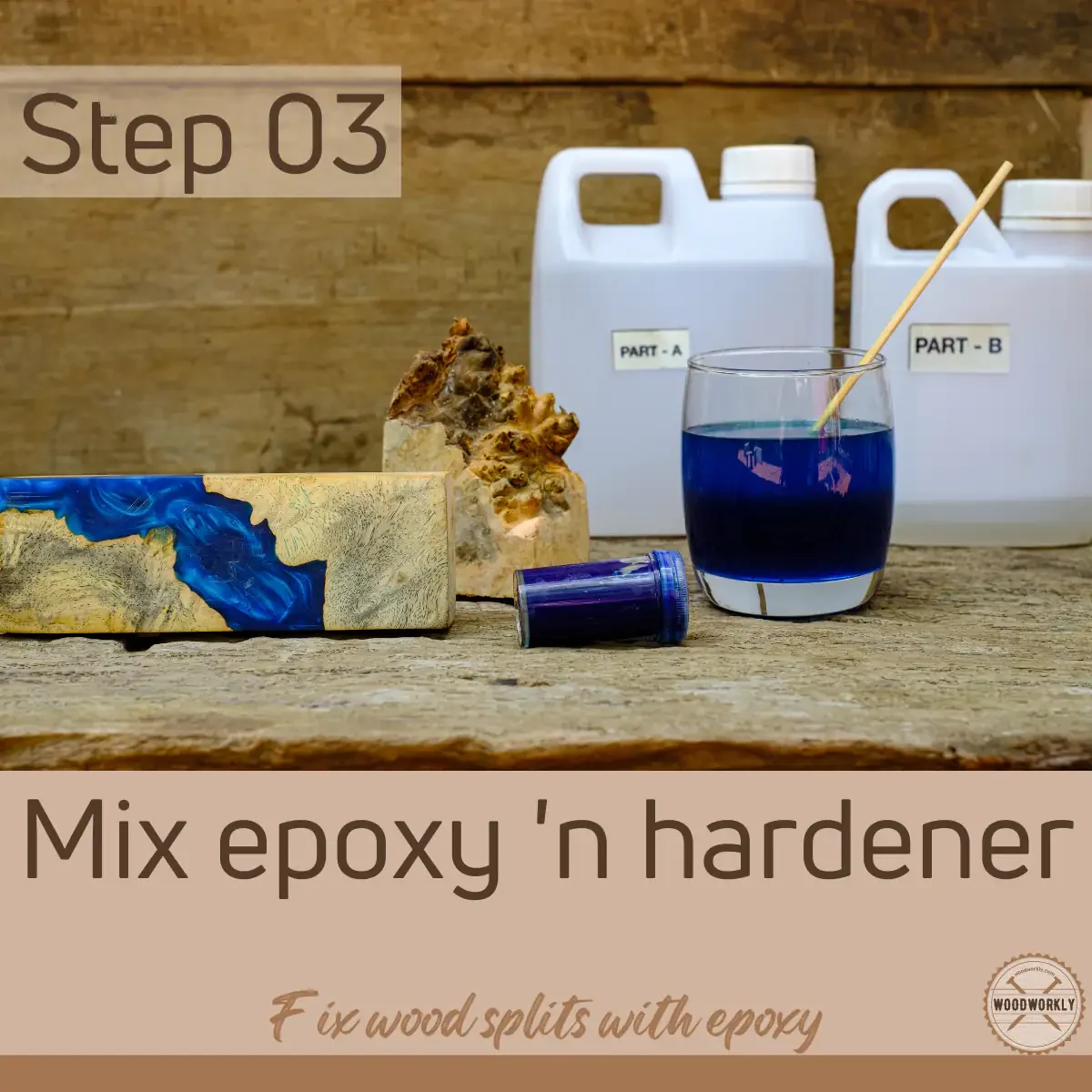
Or you can use a heat gun to heat the mixture and give more liquid consistency. The warm mixture forms less bubbles and flaws freely than the thicker one and is easy to apply.
You get 10 minutes of mixing time to mix epoxy and hardener. After that, the epoxy will start to get harden and set off.
A heat gun removes the bubbles, or you can just blow up to remove them.
4. Tint The Epoxy Mixture
Please note that this is an optional step you can skip if you’re happy with the natural color of your epoxy mixture.
By tinting, you’ll be able to color up the mixture and hide cracks perfectly matching the wood.
Add a very small amount of artist charcoal to the epoxy mixture and mix them well to tint the mixture. Or you can add wood-colored dye to maintain uniform color.
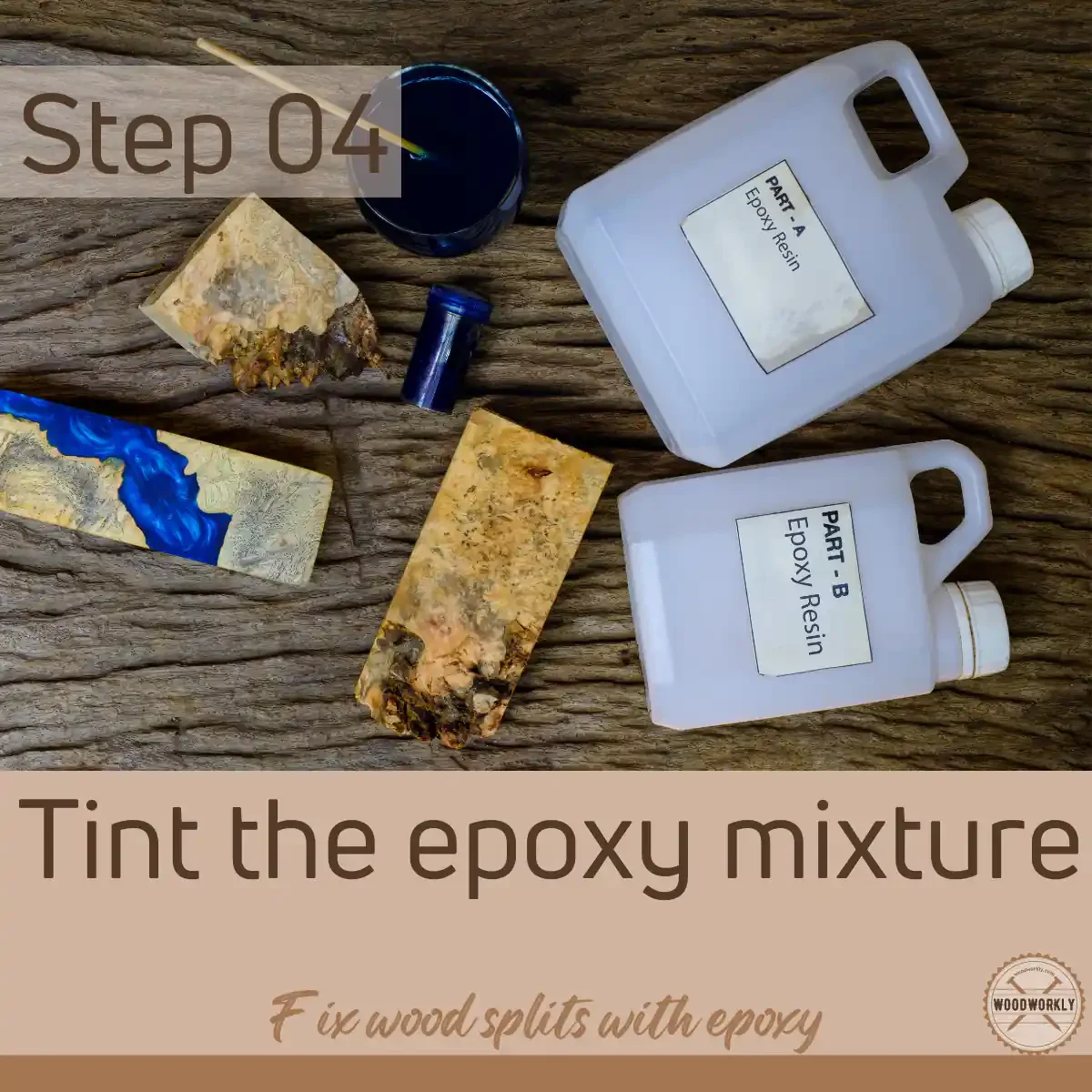
Never use sawdust to tint epoxy since they have inconsistent particular sizes which then wouldn’t allow the epoxy to migrate into the very far sections of the crack that we need to fill.
5. Pour Epoxy Into Wood Splits
Now pour the epoxy mixture very lightly into the largest portion of the crack leaving air space at the other side of the crack.
This allows air to escape from the crack as the epoxy migrates through the various sections.
Depending on the temperature and the open time of the epoxy the application time varies from 10 minutes to many hours.
But I highly suggest you speed up the application process since epoxy dries faster especially when it is outside.
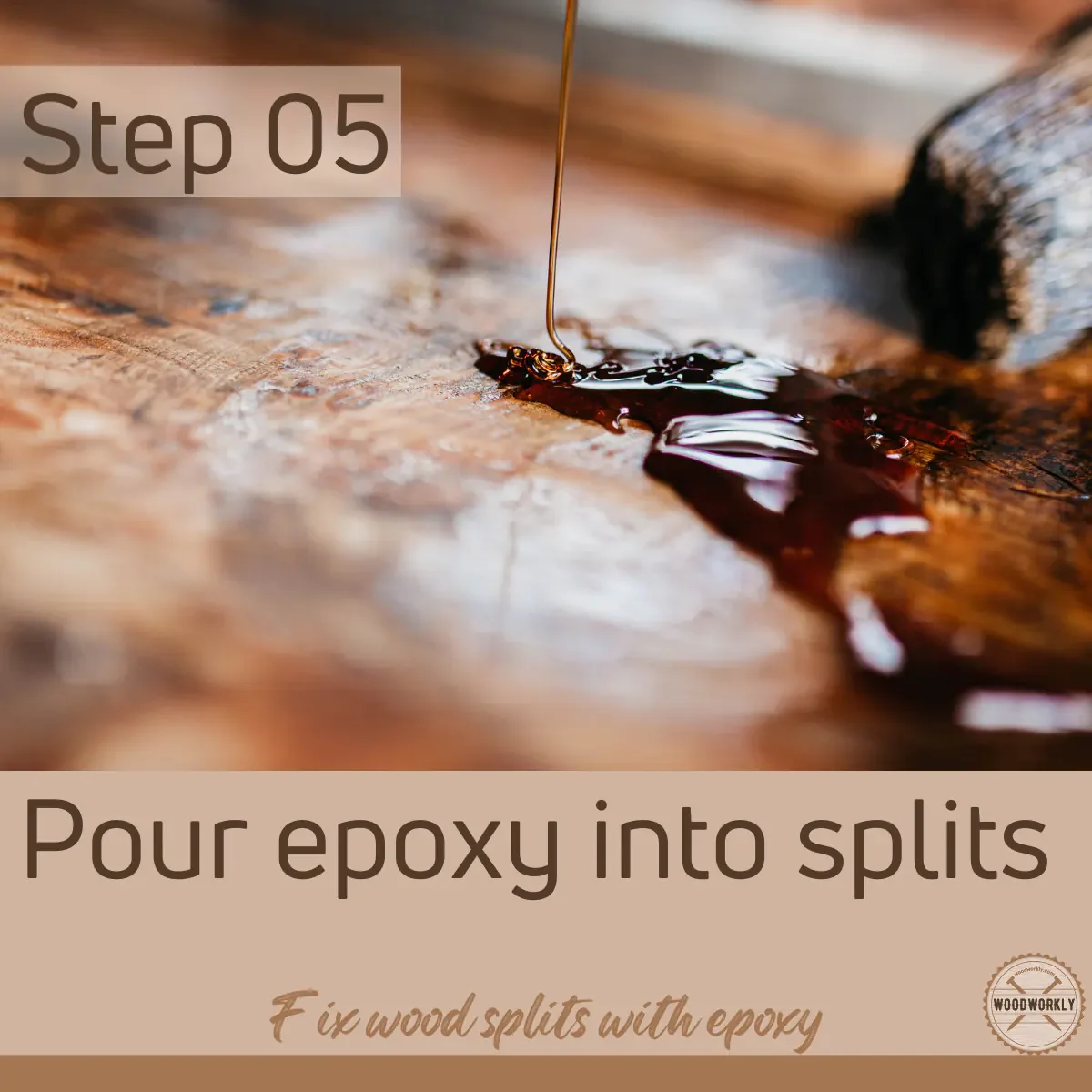
After finishing pouring epoxy down the entire crack, you’ll notice some bubbles forming on top since they have nowhere inside of the crack. Remove them by blowing air.
Don’t stop the filling until the epoxy reaches the top.
6. Let It Dry And Cure
Let the filled epoxy dry and cure for 24 hours. It won’t take that long to cure but drying time can vary on the environmental humidity.
75 degrees Fahrenheit is the ideal temperature to cure the epoxy resin.
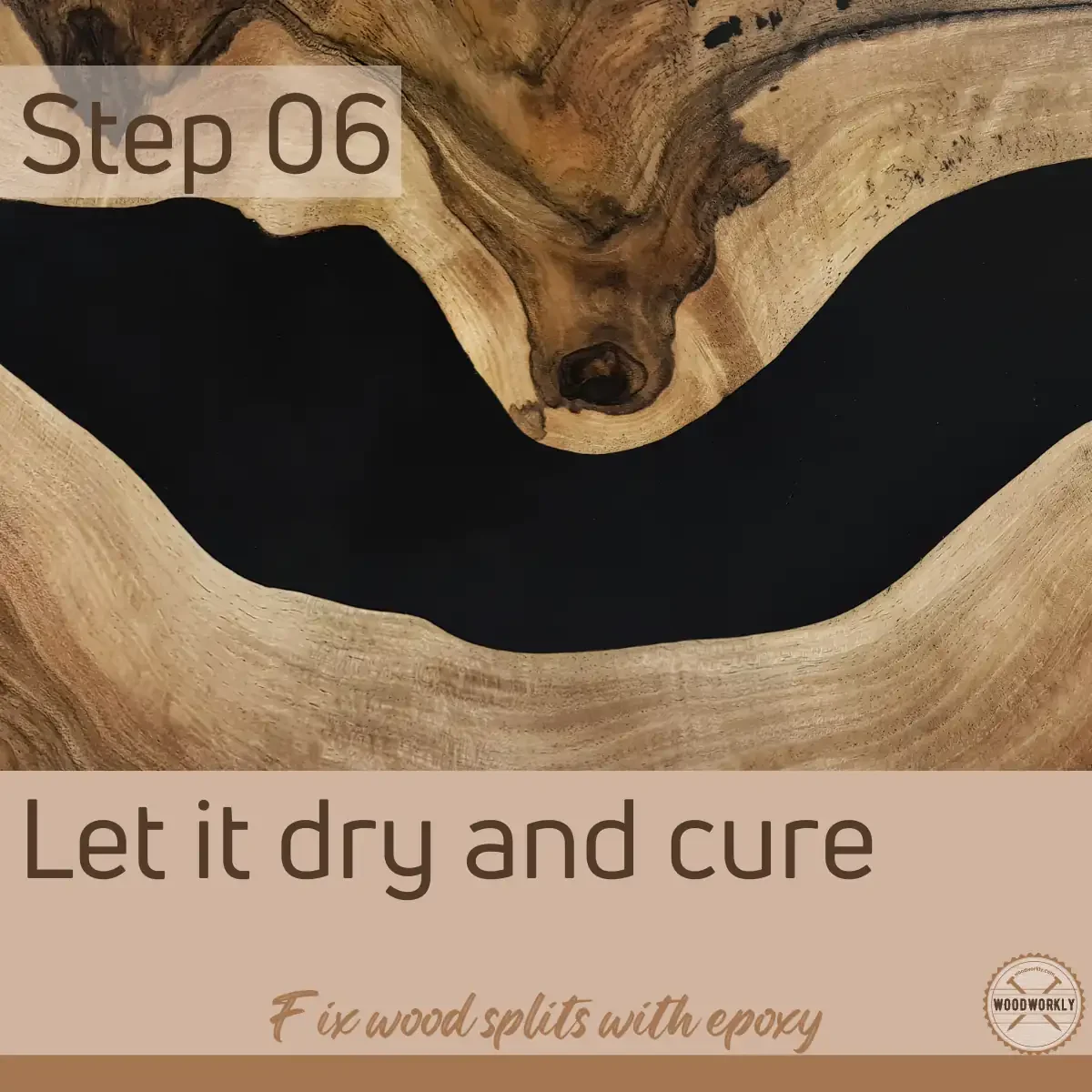
Keep the wood in a dust-free and temperature-controlled environment until the epoxy is set completely.
Once the epoxy is fully cured, it is very dense and brittle which allows you to sand effectively.
7. Level The Surface
Once the epoxy is fully dried and cured after 24 hours, check the surface, and cut the excess epoxy by sanding the tabletop with 60 to 80-grit sandpaper.
After that smoothen the surface using 220-grit sandpaper.
Then remove sawdust and other residues and clean the surface.
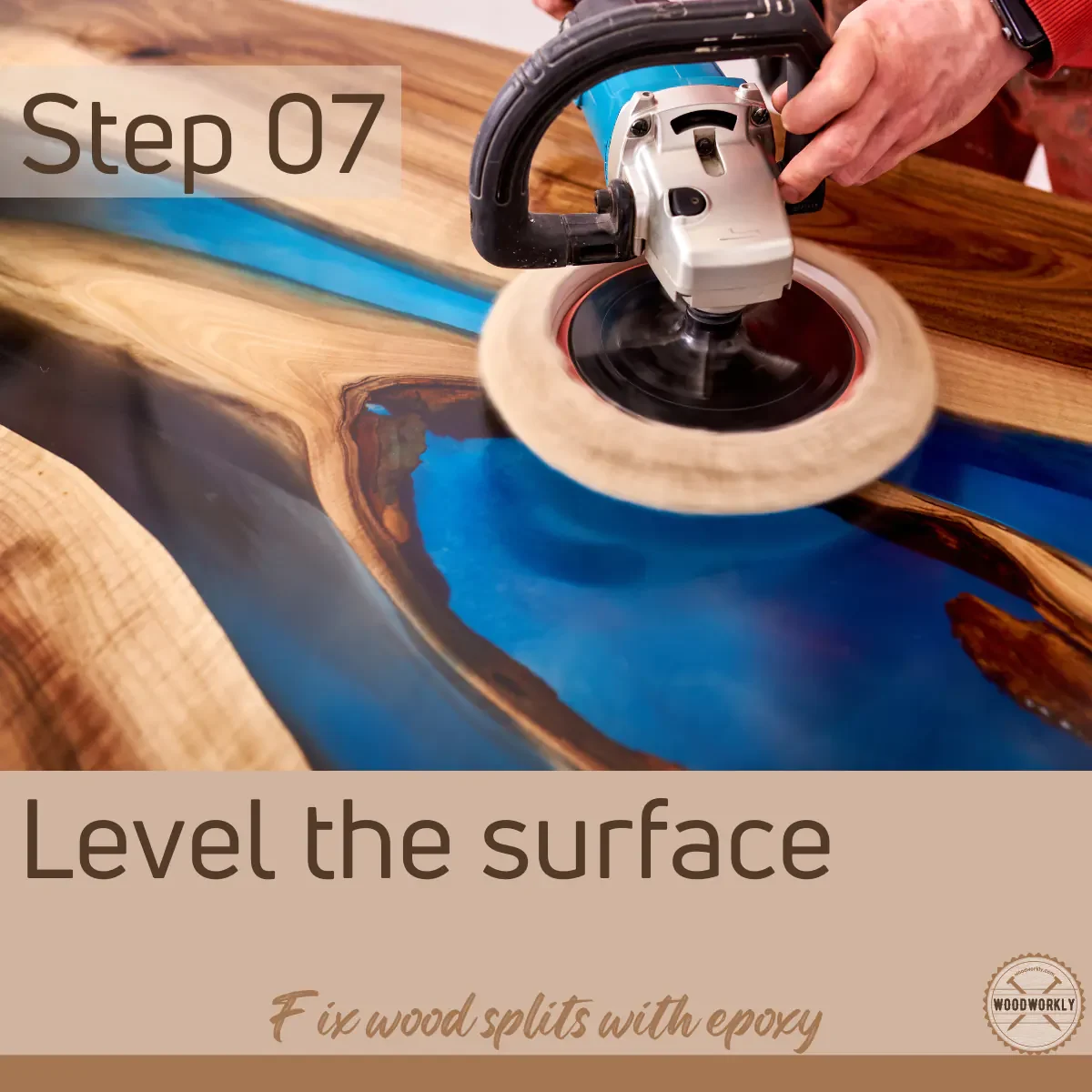
After that, you can apply wax or varnish as a topcoat to polish the surface and give it some sheen.
That’s it, folks! If you’re still curious, will epoxy stop wood from splitting? Yes, but only if you followed the correct method as discussed above.
Let’s answer some frequently asked questions.
How Long Does Epoxy Last On Wood?
Epoxy lasts on wood for about 10 to 20 years with proper cleaning and maintenance. Epoxy is very durable and makes a strong bond with wood fibers.
Keep the epoxy surface dust free and away from direct sunlight since UV rays in the sunlight breaks the polymer coat of epoxy resin and reduce its performance.
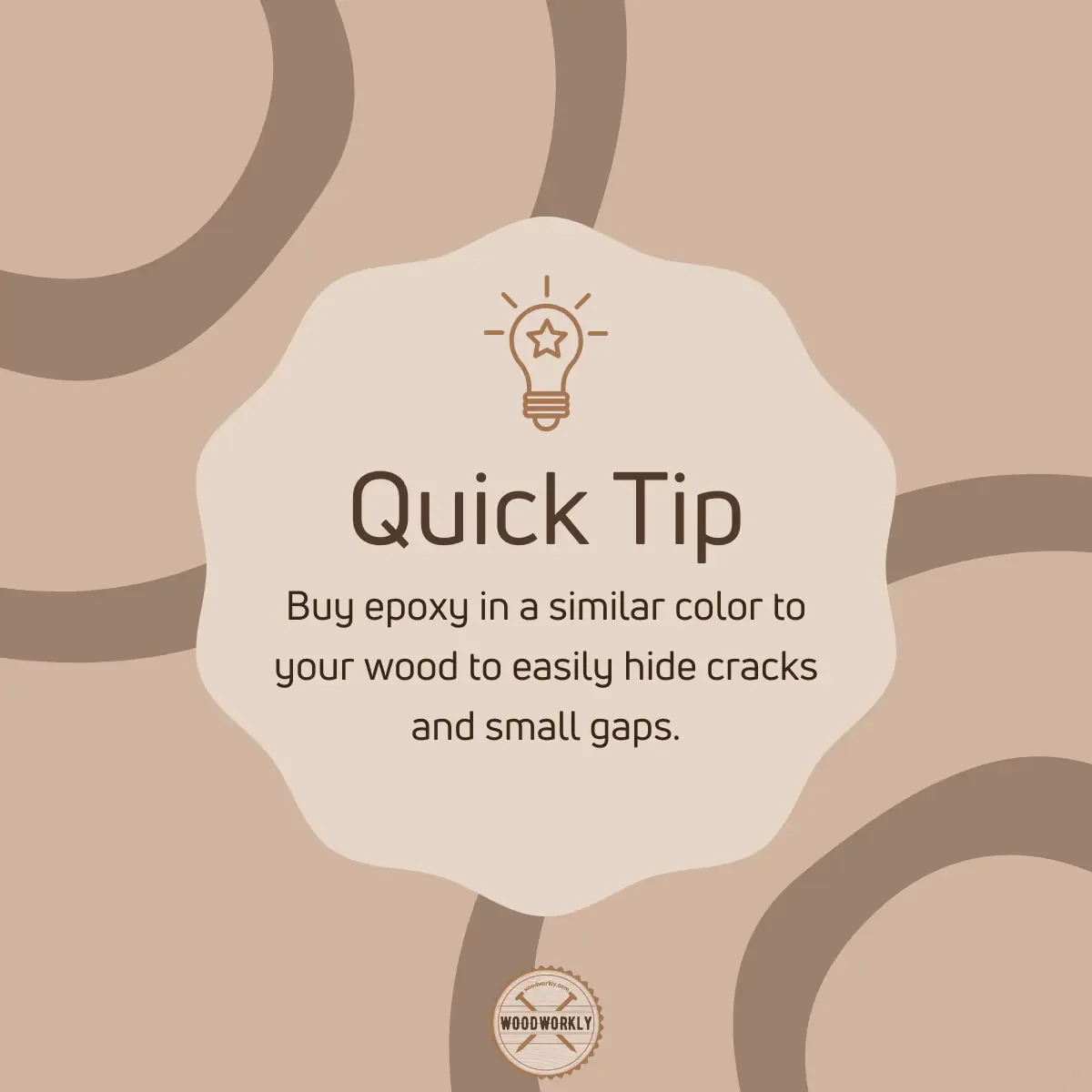
You can use epoxy as a waterproofing sealer or as a filler to hide splits, gaps, and small cracks on the wood surface.
How To Fill Small Cracks In Wood With Epoxy?
Here’re the steps you need to follow when filling small cracks in wood with epoxy,
- Clean the cracked areas
- Mix epoxy resin with hardener
- Tint the epoxy mixture
- Pour epoxy into the cracks
- Let the epoxy dry and cure
- Level the surface by sanding the excess
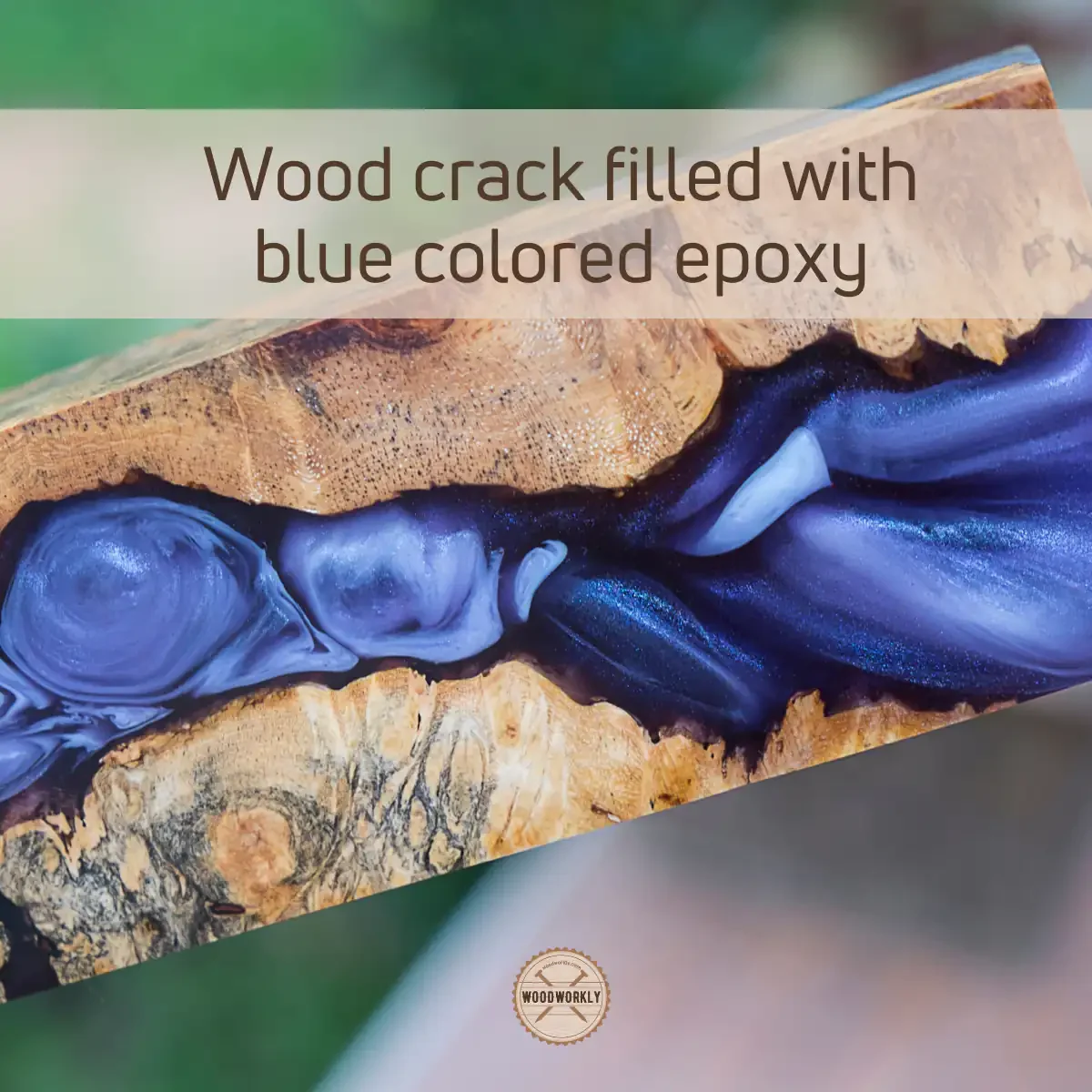
Fill cracks with epoxy. Please note, overfilling is always better than underfilling since you can cut the excess when it is fully cured.
Simple as that!
How To Strengthen Wood With Epoxy?
You can apply epoxy on wood as a bonding agent. It bonds extremely well with wood fibers and makes a durable and strong bond.
First, you need to mix equal parts of epoxy resin with a hardener and then pour on the wood. then, let the mixture cure for 24 hours.
Upon curing epoxy adheres well to the wood surface which lasts over decades with proper maintenance and cleaning.
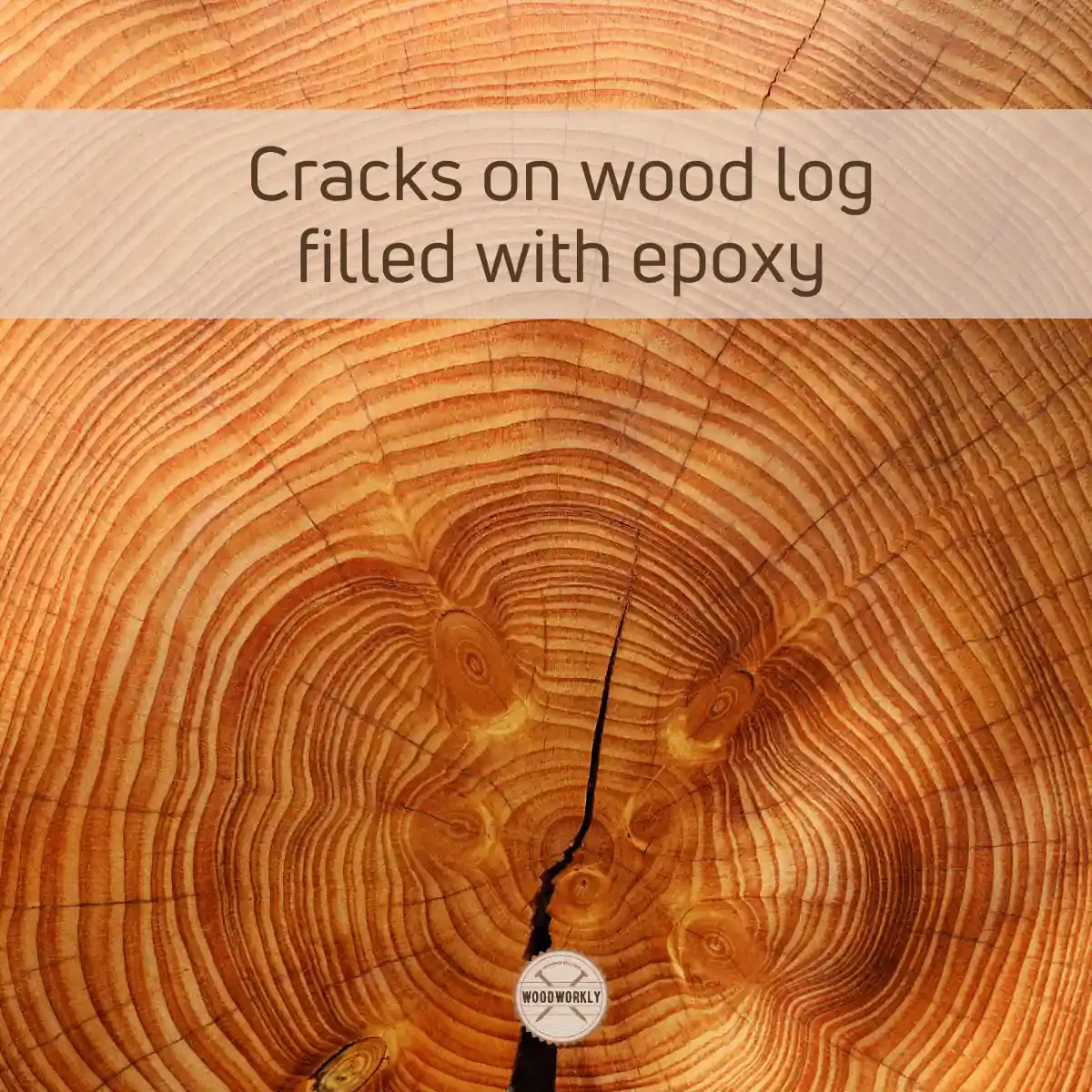
Did I cover all you wanted to know about: Will Epoxy Stop Wood From Splitting?
In this article we discussed, will epoxy stop wood from splitting, how epoxy reacts with the wood surface to make strong bonds and how to fill cracks and splits on wood perfectly without messing things up.
Epoxy keeps wood from splitting by making a strong durable bond between the split wood surfaces. After mixing epoxy resin with hardener pour a sufficient amount of epoxy into the cracks and let it cure for 24 hours. Then level the surface by sanding.
Furthermore, I’ve answered some frequently asked questions as well.
Hope you learned everything about how epoxy stops the wood from splitting and how to do that correctly.
Try epoxy to fill cracks in your household furniture to gain experience and finally polish the surface to give back the original sheen of the wood.